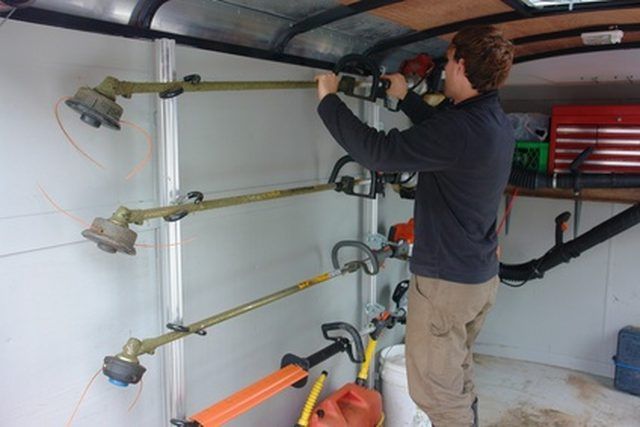Bulbs
Flower Basics
Flower Beds & Specialty Gardens
Flower Garden
Garden Furniture
Garden Gnomes
Garden Seeds
Garden Sheds
Garden Statues
Garden Tools & Supplies
Gardening Basics
Green & Organic
Groundcovers & Vines
Growing Annuals
Growing Basil
Growing Beans
Growing Berries
Growing Blueberries
Growing Cactus
Growing Corn
Growing Cotton
Growing Edibles
Growing Flowers
Growing Garlic
Growing Grapes
Growing Grass
Growing Herbs
Growing Jasmine
Growing Mint
Growing Mushrooms
Orchids
Growing Peanuts
Growing Perennials
Growing Plants
Growing Rosemary
Growing Roses
Growing Strawberries
Growing Sunflowers
Growing Thyme
Growing Tomatoes
Growing Tulips
Growing Vegetables
Herb Basics
Herb Garden
Indoor Growing
Landscaping Basics
Landscaping Patios
Landscaping Plants
Landscaping Shrubs
Landscaping Trees
Landscaping Walks & Pathways
Lawn Basics
Lawn Maintenance
Lawn Mowers
Lawn Ornaments
Lawn Planting
Lawn Tools
Outdoor Growing
Overall Landscape Planning
Pests, Weeds & Problems
Plant Basics
Rock Garden
Rose Garden
Shrubs
Soil
Specialty Gardens
Trees
Vegetable Garden
Yard Maintenance
How to Compare Weed Trimmers
How to Compare Weed Trimmers. If you have to do your own lawncare, you know the importance of a quality weed trimmer. Without a weed trimmer, bits of grass remain along the fence lines after mowing. Weeds sprout alongside sidewalks or cobblestone. Trees remain encircled with a thin ring of weeds. Without a weed trimmer, your lawn looks like it just...

If you have to do your own lawncare, you know the importance of a quality weed trimmer. Without a weed trimmer, bits of grass remain along the fence lines after mowing. Weeds sprout alongside sidewalks or cobblestone. Trees remain encircled with a thin ring of weeds. Without a weed trimmer, your lawn looks like it just received a poor haircut with dull scissors. Weed trimmers, however, help you groom your lawn and give it a manicured look. Trees, fences and pathways look neat and trimmed because if you have a weed trimmer, you can reach weeds no matter where they grow.
Compare shafts. The shaft consists of the metal bar between the engine and the trimmer. Shafts come in three basic styles: curved, straight and split. Curved shafts accommodate "curve" near the trimming unit. This curve provides basic to light trimming capabilities that allow you to prune an even path. Straight shafts provide better access beneath thick bushes. Split styles accommodate traditional trimming cords, but they also accommodate different attachments like blades or blowing units.
Select the right power source. Weed trimmers come in three power styles: cordless, electric and gasoline. Cordless trimmers provide the least power. They operate off a battery that provides 20 minutes to 1 hour of trimming. When you finish, you must plug in the trimmer's battery charger and re-charge the battery. Corded electric trimmers offer intermediate power. They plug into a standard 110-volt socket. They offer cord lengths of 25 feet to 50 feet, and they can handle thick weeds. Gasoline-powered units provide enough power to trim weeds or brush. They create more noise than corded trimmers and they create exhaust.
Compare electrical power or motor sizes. A standardized rating for weed trimmers does not exist. Manufacturers rate electric trimmers according to amperage (amp) or volts (v). Amperage or volts indicates the electrical power the trimmer produces. Trimmers with higher amperage or volts trim faster. Corded and cordless electric trimmers have 3 to 4.4 amps or 12 volts to 18 volts Manufacturers rate weed gas-powered trimmer engines according to how many cubic centimeters (cc) of air they can displace. Small 15-cc to 25-cc engines provide basic trimming power. They might include cordless trimmers. They don't work against thick weeds or brush. Most gas-powered trimmers come in 20-cc to 31-cc engines that provide the maximum amount of weed trimming power. They can handle the thickest weeds. They can power a trimming blade to cut through thick brush.
Compare batteries or gas tanks. Electric trimmers trim for 20 minutes to 60 minutes. Gas-powered trimmers hold 1/4 gallon to 1/3 gallon and trim for 30 minutes to 90 minutes.
Test the automatic cord extender. Automatic cord extenders allow you to trim uninterrupted. When the cord shortens, you can tap a button, and the trimming cord lengthens. Some weed trimmers have automatic cord extenders on the handle. Others have a button beneath the trimming cord that you tap. Look for one that works reliably and that you can work easily.
Compare features. Features like auto-shut off release triggers, extended safety guard around the trimming cord, sure-grip handles, push-button starting and deep cord basins that can store lots of trimming cord make your weed trimmer safer and more versatile. Purchase a trimmer that offers the most features.
Compare prices. Cordless weed trimmers cost between $39 and $69. Corded weed trimmers cost $50 to $100. Gas-powered weed trimmers cost $100 to $240. You must also consider that string for all types of weed trimmers costs $6 to $15. Finally, for gas-powered trimmers, you must also purchase gasoline and motor oil. Try not to sacrifice safety features to save a few bucks.
Review the warranties. Many retailers offer a 90-day warranty on weed trimmers. Some manufacturers, however, offer a 1-year parts warranty.